Abstract
Thirty-seven coelenterazine analogues were synthesized and incorporated into apo-aequorin, yielding 30 semi-synthetic aequorins that have the capacity to emit a significant amount of light in the presence of Ca2+. The properties of resultant photoproteins were investigated. The most prominent feature of those photoproteins was the wide range in their sensitivities to Ca2+ concentration. The relative intensity of Ca2+-triggered luminescence of the photoproteins ranged from 0.01 to 190 when compared with natural aequorin (relative intensity 1.0) at pCa 6 for the cases where the relative intensity is less than 1 and at pCa 7 for the cases where the relative intensity is higher than 1. Eight of the semi-synthetic aequorins belonged to the class of e-aequorin. With two of those photoproteins, the degree of dependence of the luminescence intensity ratio I400/I465 on pCa was greater than that with e-aequorin, suggesting that these two photoproteins are possibly superior to e-aequorin in measuring Ca2+ concentration by the ratio method.
Full text
PDF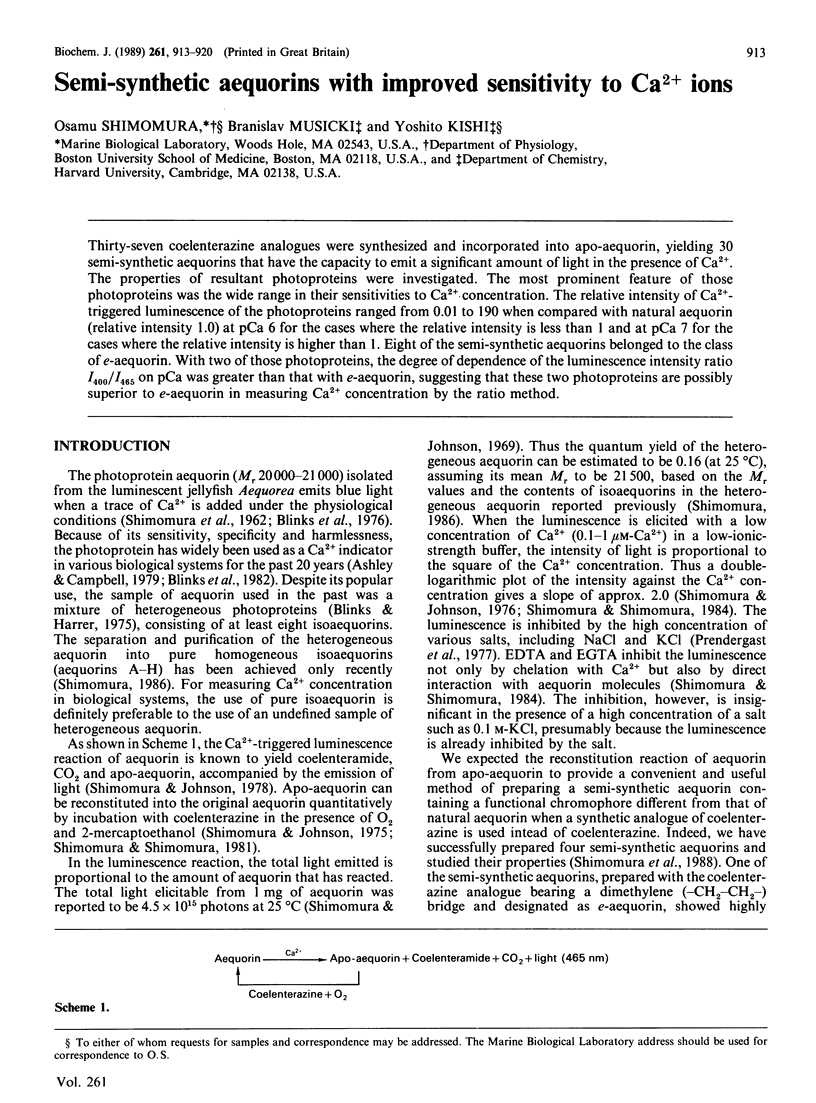
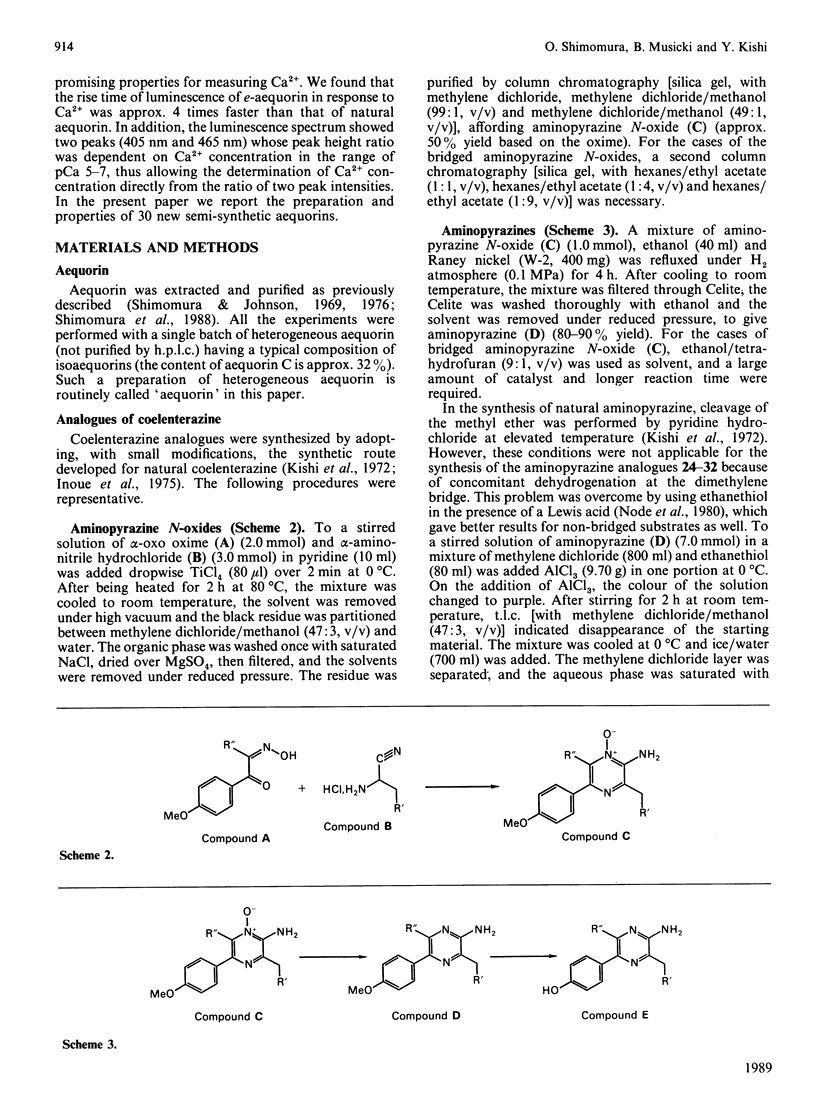
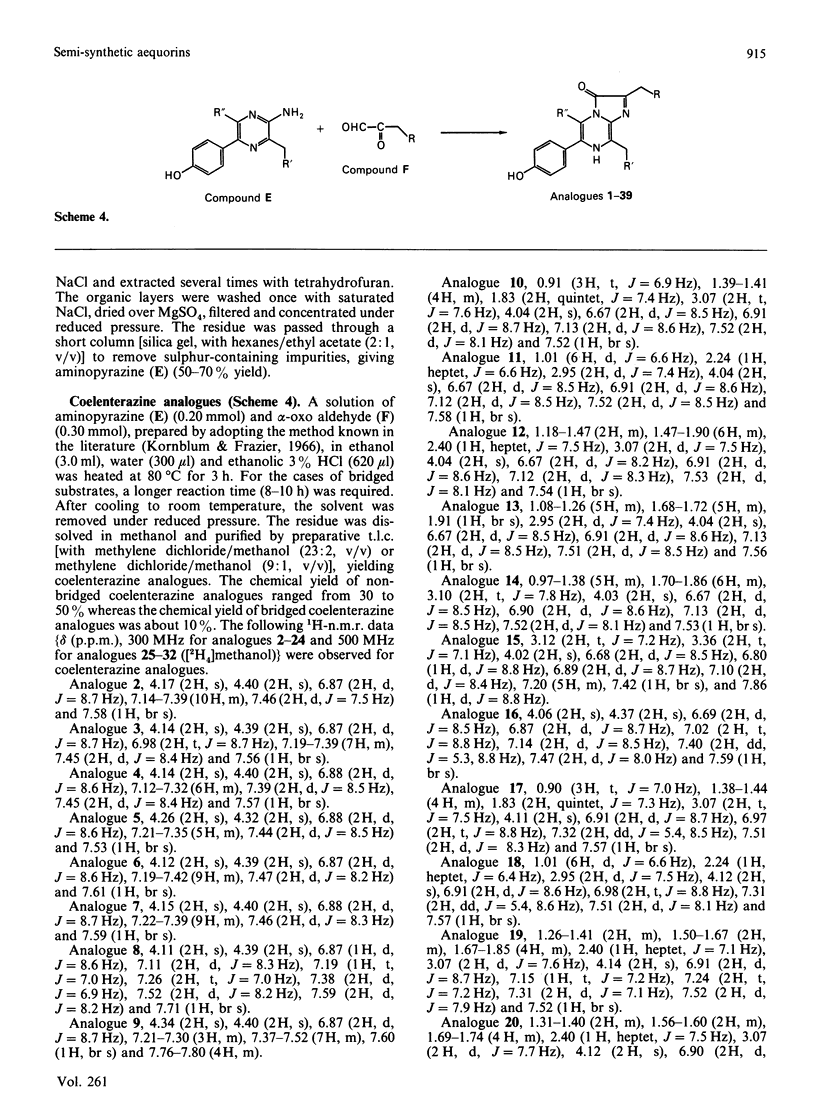
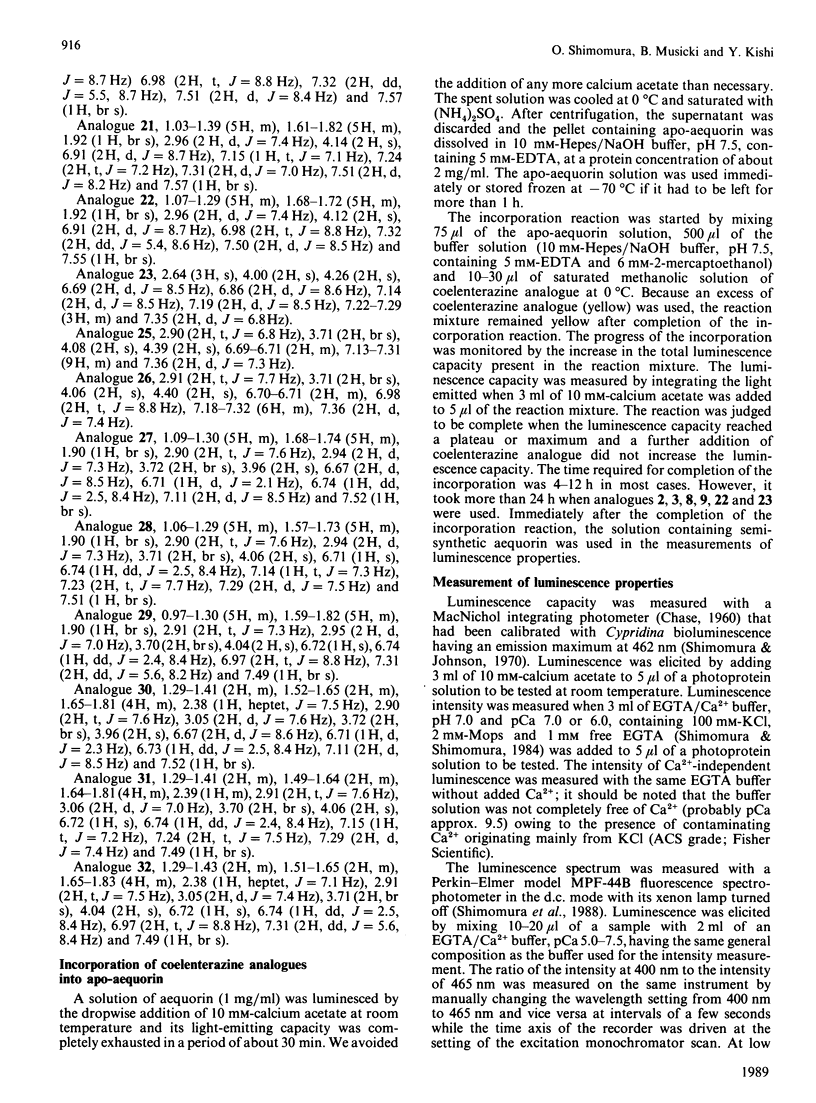
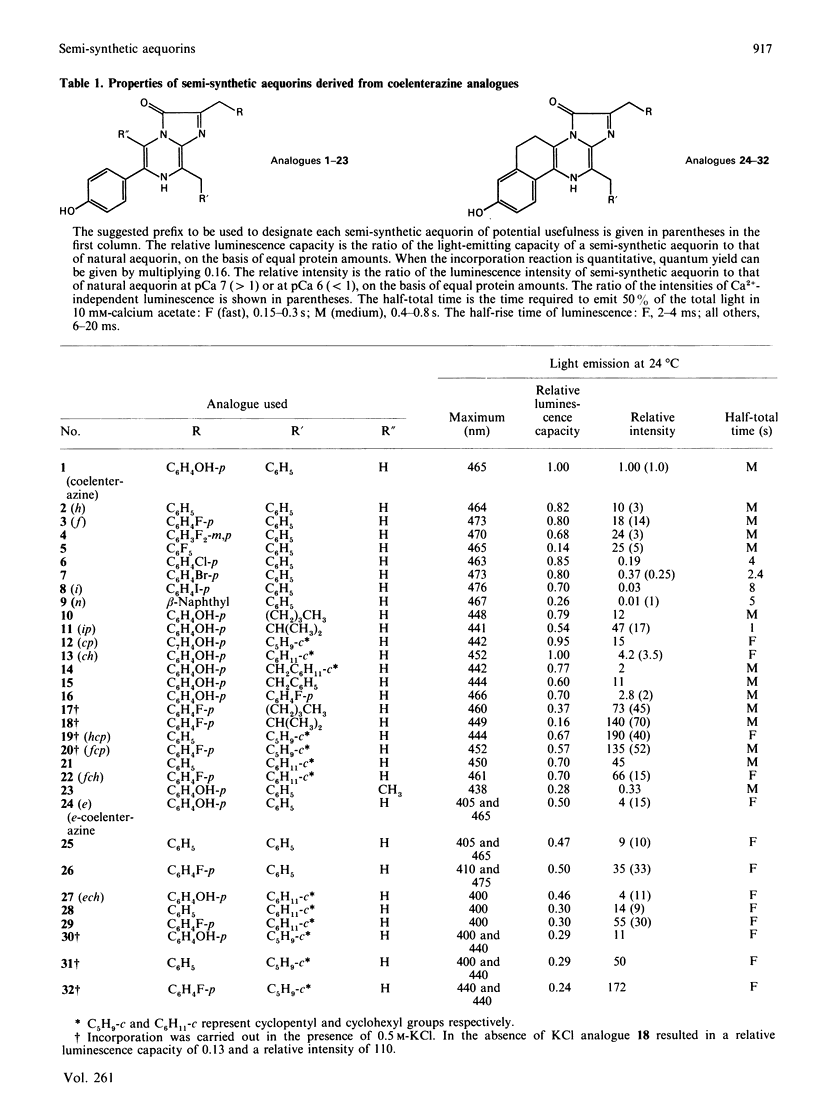
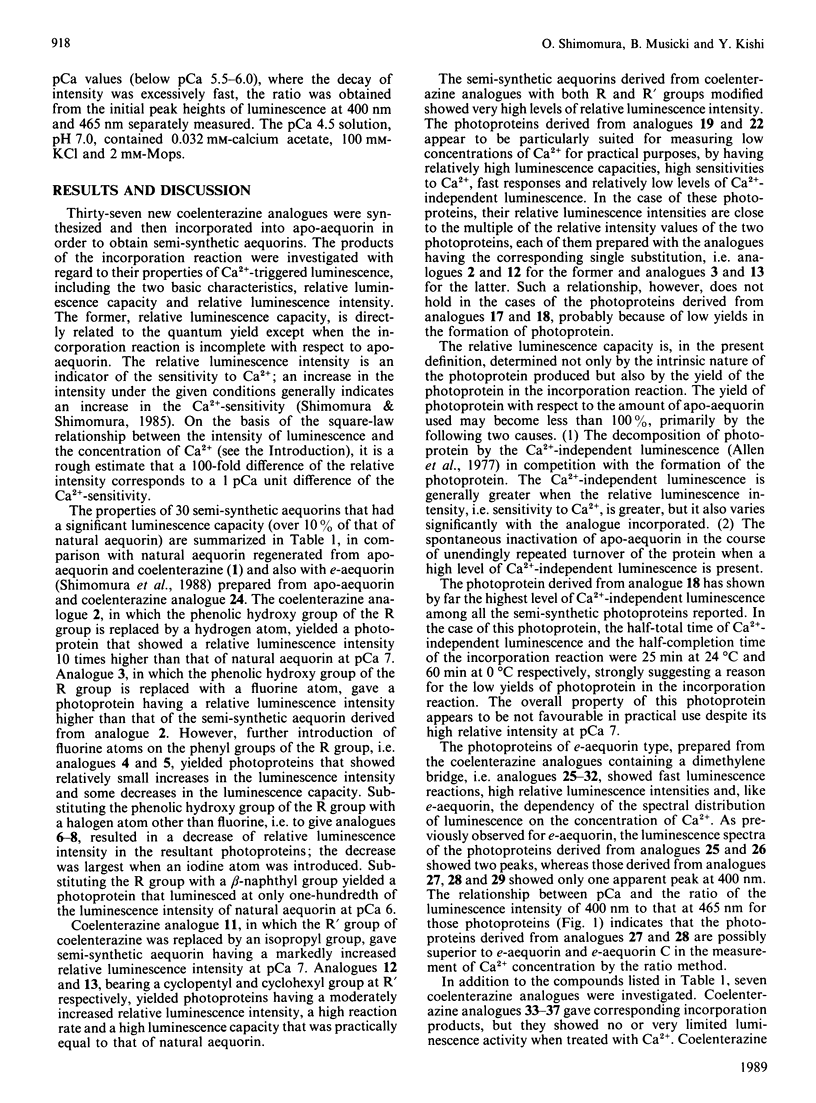
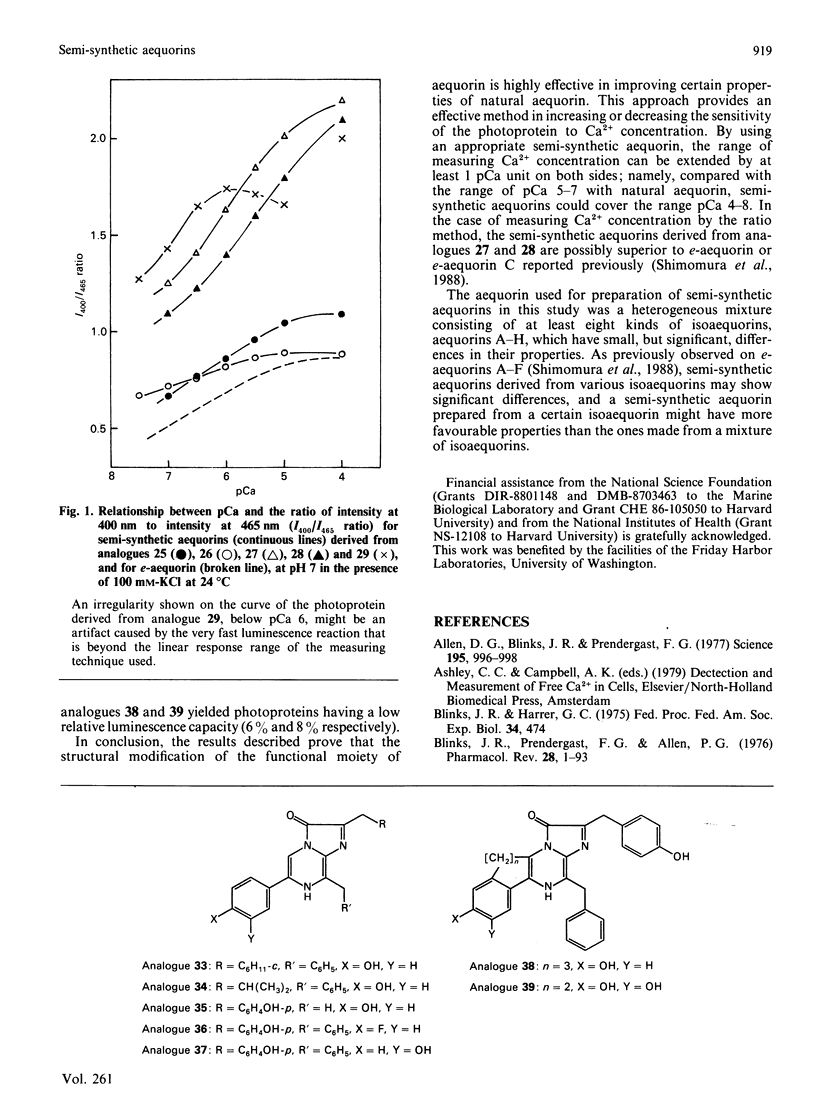
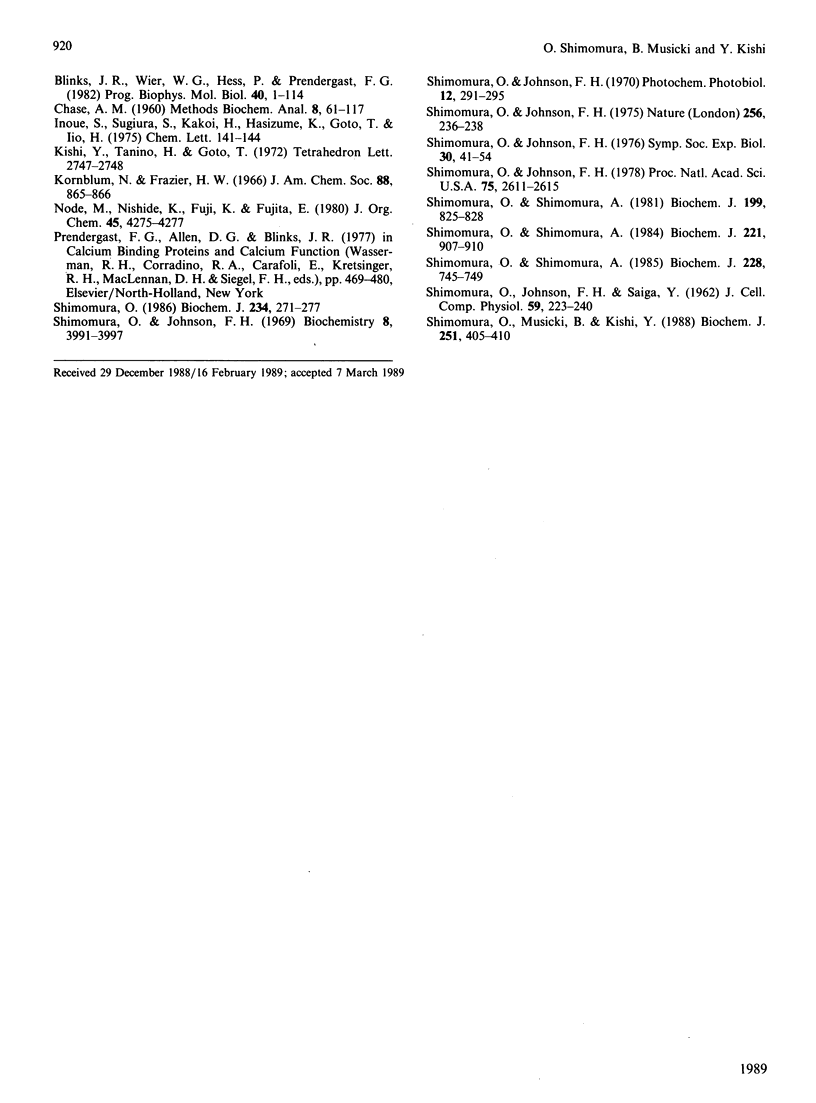
Selected References
These references are in PubMed. This may not be the complete list of references from this article.
- Allen D. G., Blinks J. R., Prendergast F. G. Aequorin luminescence: relation of light emission to calcium concentration--a calcium-independent component. Science. 1977 Mar 11;195(4282):996–998. doi: 10.1126/science.841325. [DOI] [PubMed] [Google Scholar]
- Blinks J. R., Prendergast F. G., Allen D. G. Photoproteins as biological calcium indicators. Pharmacol Rev. 1976 Mar;28(1):1–93. [PubMed] [Google Scholar]
- Blinks J. R., Wier W. G., Hess P., Prendergast F. G. Measurement of Ca2+ concentrations in living cells. Prog Biophys Mol Biol. 1982;40(1-2):1–114. doi: 10.1016/0079-6107(82)90011-6. [DOI] [PubMed] [Google Scholar]
- CHASE A. M. The measurement of luciferin and luciferase. Methods Biochem Anal. 1960;8:61–117. doi: 10.1002/9780470110249.ch2. [DOI] [PubMed] [Google Scholar]
- SHIMOMURA O., JOHNSON F. H., SAIGA Y. Extraction, purification and properties of aequorin, a bioluminescent protein from the luminous hydromedusan, Aequorea. J Cell Comp Physiol. 1962 Jun;59:223–239. doi: 10.1002/jcp.1030590302. [DOI] [PubMed] [Google Scholar]
- Shimomura O. Isolation and properties of various molecular forms of aequorin. Biochem J. 1986 Mar 1;234(2):271–277. doi: 10.1042/bj2340271. [DOI] [PMC free article] [PubMed] [Google Scholar]
- Shimomura O., Johnson F. H. Mechanisms in the quantum yield of Cypridina bioluminescence. Photochem Photobiol. 1970 Oct;12(4):291–295. doi: 10.1111/j.1751-1097.1970.tb06061.x. [DOI] [PubMed] [Google Scholar]
- Shimomura O., Johnson F. H. Peroxidized coelenterazine, the active group in the photoprotein aequorin. Proc Natl Acad Sci U S A. 1978 Jun;75(6):2611–2615. doi: 10.1073/pnas.75.6.2611. [DOI] [PMC free article] [PubMed] [Google Scholar]
- Shimomura O., Johnson F. H. Properties of the bioluminescent protein aequorin. Biochemistry. 1969 Oct;8(10):3991–3997. doi: 10.1021/bi00838a015. [DOI] [PubMed] [Google Scholar]
- Shimomura O., Johnson F. H. Regeneration of the photoprotein aequorin. Nature. 1975 Jul 17;256(5514):236–238. doi: 10.1038/256236a0. [DOI] [PubMed] [Google Scholar]
- Shimomura O., Musicki B., Kishi Y. Semi-synthetic aequorin. An improved tool for the measurement of calcium ion concentration. Biochem J. 1988 Apr 15;251(2):405–410. doi: 10.1042/bj2510405. [DOI] [PMC free article] [PubMed] [Google Scholar]
- Shimomura O., Shimomura A. Effect of calcium chelators on the Ca2+-dependent luminescence of aequorin. Biochem J. 1984 Aug 1;221(3):907–910. doi: 10.1042/bj2210907. [DOI] [PMC free article] [PubMed] [Google Scholar]
- Shimomura O., Shimomura A. Halistaurin, phialidin and modified forms of aequorin as Ca2+ indicator in biological systems. Biochem J. 1985 Jun 15;228(3):745–749. doi: 10.1042/bj2280745. [DOI] [PMC free article] [PubMed] [Google Scholar]
- Shimomura O., Shimomura A. Resistivity to denaturation of the apoprotein of aequorin and reconstitution of the luminescent photoprotein from the partially denatured apoprotein. Biochem J. 1981 Dec 1;199(3):825–828. doi: 10.1042/bj1990825. [DOI] [PMC free article] [PubMed] [Google Scholar]


